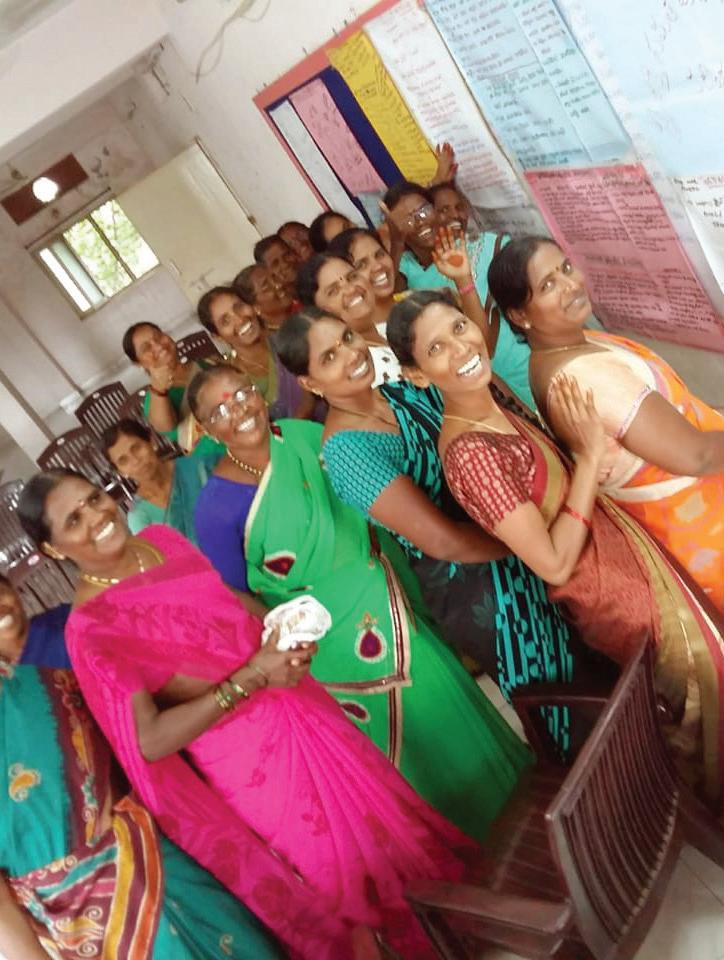
8 minute read
HERITAGE We visit centuries-old Hampi and is awe-struck by the splendid architectural legacy of the Vijayanagara Empire of yore
Making a simple idea work: Neel Ghose and Aarushi Batra “We’ve also received desperate calls from expats living in the UK and USA who were worried for their elderly parents in the midst of the pandemic. They asked us if we could drop off rations and groceries to their parents, who were unable to step outside and shop. So, we began to drop off groceries at the doorsteps of those who were completely stuck at home,” elaborates Batra.
RHA has another initiative too called Senior Patrol, where they help senior citizens get vaccinated. She explains, “We help elderly people, especially those who live alone to register online on the Co-Win portal. ‘Robins’ pick up and take them to the vaccination centres and then drop them home. The senior citizens are often helpless and so they feel really grateful when we offer our help. We often get to hear this line—Jahan apno ne saath chhod diya, aapne hamara haath pakra (where our own people abandoned us, you have held our hand).” Spread across more than 105 cities and empowering more the world. The initiative was rolled out in July-August 2020 than 7,000 students with basic primary education, the Robin and the organisation has almost met its target. Around 23 Hood Academy is another enterprise initiated by RHA. Here, million people have been given food across eight countries, ‘Robins’ conduct regular classes with the help of a standardised and what is remarkable is that it was done with no help from curriculum to introduce and encourage the spirit of learning. the governments or corporate bodies. The aim of the Academy is to provide street kids the tools and “The pandemic posed multiple challenges. For knowledge to go to school. starters, we had to practise social distancing. We started off by serving food, water and providing The kind of food Uma Chilak joined RHA as a volunteer and was the city head of the Hyderabad footwear to migrant labourers,” she recalls. wastage at lavish unit from 2015-2020. The interior Ordinary citizens started to contribute by Indian weddings is designer has plenty to share about the providing home-cooked food and though restaurants were closed, the owners would heart-rending, she says, stellar role played by RHA during the pandemic. ensure their kitchens were operating by cooking food for the homeless. Even Bollywood actors Sonu Sood and Bhumi Pednekar, as well as chef especially when millions of children in the “We found that people from all walks of life had been affected by Vikas Khanna tied up with RHA to provide footwear, rations and other items to the underprivileged, she reveals. country sleep hungry every night the pandemic. It is not just migrant labourers. Many people’s salaries and earnings have suddenly stopped. Beauty parlour employees, hotel cleaners, gym RHA has also rallied around and participated in instructors, staff working in shops selling non-essential items flood-relief efforts in Orissa, Bihar, Maharashtra and Andhra and theatre workers had all been suddenly left high and dry,” Pradesh during the pandemic. “In some instances, ‘Robins’ shares Chilak. have travelled in boats for more than two hours to reach inaccessible flood-hit areas,” she points out. They had distributed 50,000 grocery kits in two months to families in the entertainment business and to drivers of Ola and Uber cabs, and more such workers in need at the height of the pandemic. A grocery kit comprises 10 kilos of rice, two kilos of dal, one kilo of sugar, 500 gm of tamarind, oil, onions and potatoes. They tapped the growing tribe of home bakers during the pandemic as well. “We delivered 30,000 cakes to schools and orphanages and blankets to those sleeping out,” adds Chilak. RHA has come a long way from serving up cooked meals in 2014 to delivering raw rations during the pandemic. But, what is heartening and warms the cockles of one’s hearts, is the spontaneous spirit of generosity that seems to drive donors and the Robins alike. We need more people like them in the world so that no one ever has to go hungry.
Advertisement
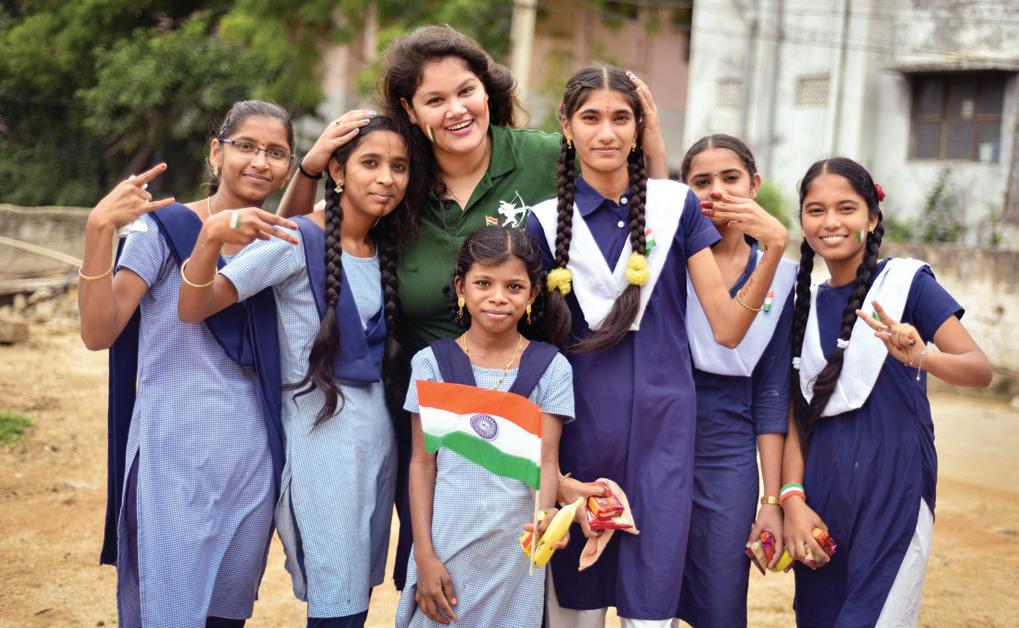
Hampi:
Where Time Stands Still
Hampi, the seat of the mighty Vijayanagara empire of yore, is one of the symbols of India’s rich legacy. It has attracted travellers for centuries now.
Mallik Thatipalli visits the UNESCO World Heritage site and comes away mesmerised by the magnificent mandapas, temples, forts, and pillared halls Photos: Mallik Thatipalli
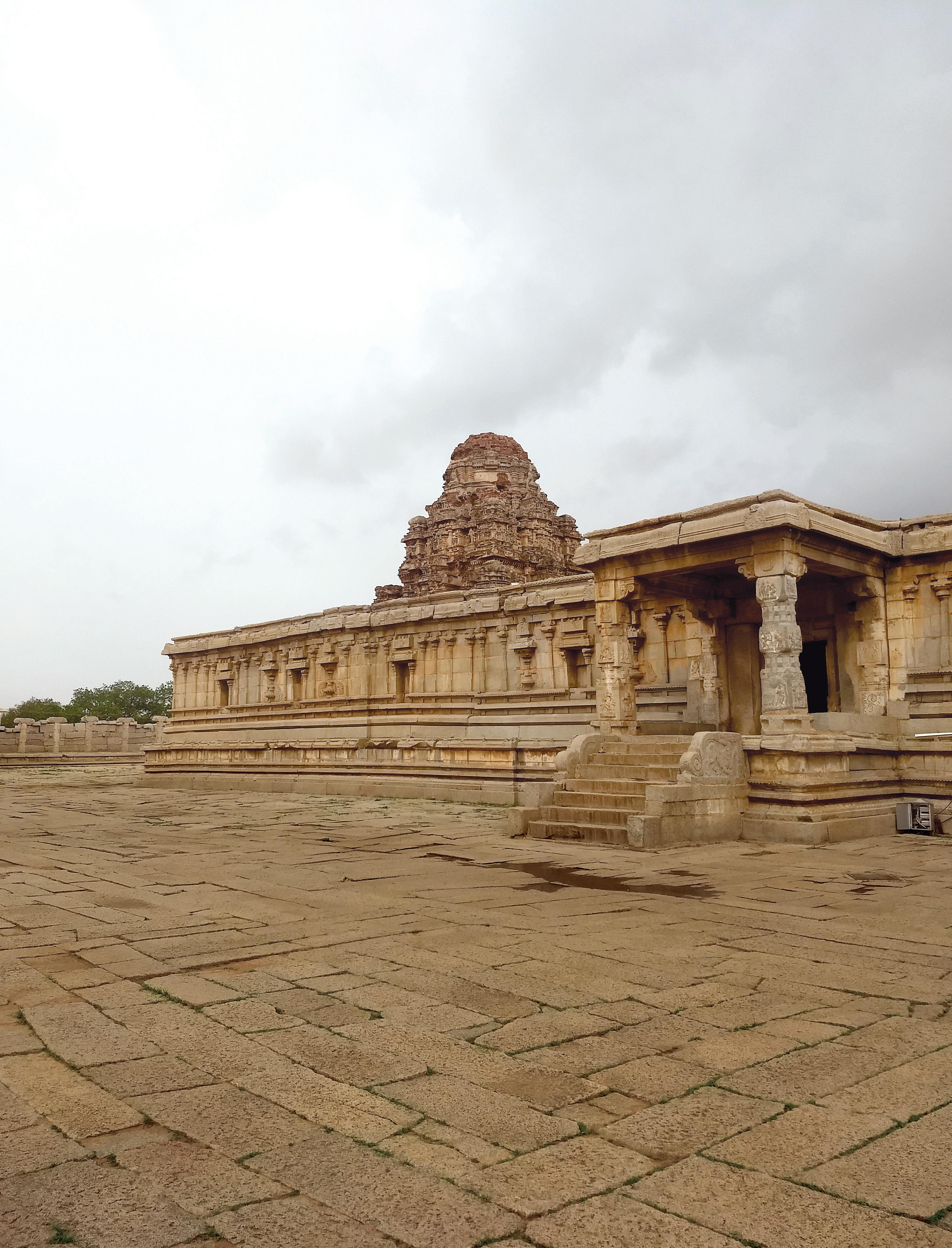
Two monsoons ago, while the world we knew still existed and where travel didn’t involve sanitisers and RT-PCR tests,
we travelled to Hampi, to simply get away from it all. The UNESCO World Heritage site in Karnataka has long occupied the imagination for being a significant monument from the point of mythology (it is believed to be the fabled kingdom of Kishkinda, the birthplace of Hanuman) as well as Indian history (as capital of the vibrant Vijayanagara empire). The very air of Hampi with its numerous temples, rock-strewn landscape, the sound of the gentle gurgle of the river Tungabhadra and its breathtaking architecture spells just magic and mystique. Every temple has a story, and every corner of the temple tells a fable. In this axis of culture and history, Hampi is where time stands still. Spread over 4,000 hectares, Hampi, which houses 1,500 temples, was a key cultural and economic centre of the south for almost 200 years. The fact that traces of its great history can still be savoured is a testimony to the art, architecture, engineering and science of that time.
The first stop for any visitor to Hampi is the famous oldest and principal temple here – the Virupaksha Temple. It is believed this temple has been functioning for prayers uninterruptedly since its inception in 7th century AD. The idol has withstood frequent raids of the Deccan sultans. One of the few temples in south India dedicated to both Vishnu and Shiva, it is also home to India’s first natural pin-hole camera.
In this temple, a giant tower or Gopura opens into the first courtyard of the compound. This pastel coloured, ninestoried tower is the most prominent landmark in Hampi and is visible from afar. The temple is a grand structure sprawling over a large area with many smaller shrines, pillared halls and gateways. Nothing in this city of architectural wonder is as beautiful as the Vijaya Vittala Temple, the unheralded queen of Hampi’s temple complexes. You have to walk along what was once the original and fabled Hampi bazaars, where diamonds and rubies were sold by kilos, to reach this temple dedicated to Vishnu.
Built in the 15th century Dravidian style, the temple is spread across a large complex filled with halls, pavilions and gateways. The most extraordinary feature of this temple is the stone chariot, which is one of the three famous stone chariots in India, the other two being in Konark and Mahabalipuram. It originally enshrined Garuda, the vehicle of Lord Vishnu.
The chariot, built on a rectangular platform, has been carved out of giant granite blocks. The chariot’s base features mythical battle scenes and a series of concentric floral motifs adorn the wheels of the chariot. The story goes that in the 16th century, King Krishnadevaraya of the Vijayanagara Empire was so fascinated with the Konark Sun temple chariot while fighting a battle in Odissa, he decided to build one here. An interesting folklore is linked to the Hampi chariot as villagers believe the world would come to a halt when the chariot moves from its place. Another highlight here is the musical pillars hall (with 56 pillars), which emit a musical note when tapped. While this portion is cordoned off to the curious visitor, it is a treat to see these Saregama pillars.
The other architectural marvel at Hampi is the symmetrical stepped tank. This stepped tank was used for religious ceremonies and was considered sacred. The tank displays the spirit of architectural innovation in the Vijayanagara Empire. Visitors can next soak in the sight of the Hazara Rama Temple, built in the early part of the 15th century by Devaraya II. The temple once served as the private temple of the royal household. The “Hazara Rama” literally means “a thousand Ramas” and the Ramayana story is carved out on stone in the temple. Presently, it is not a functioning temple and is visited for its architectural beauty. The less explored ruins of Anegundi or the “monkey kingdom”, which is part of the UNESCO site is spell-binding as well. Hanuman, the monkey god who plays a big role in the Ramayana, was believed to have been born here.
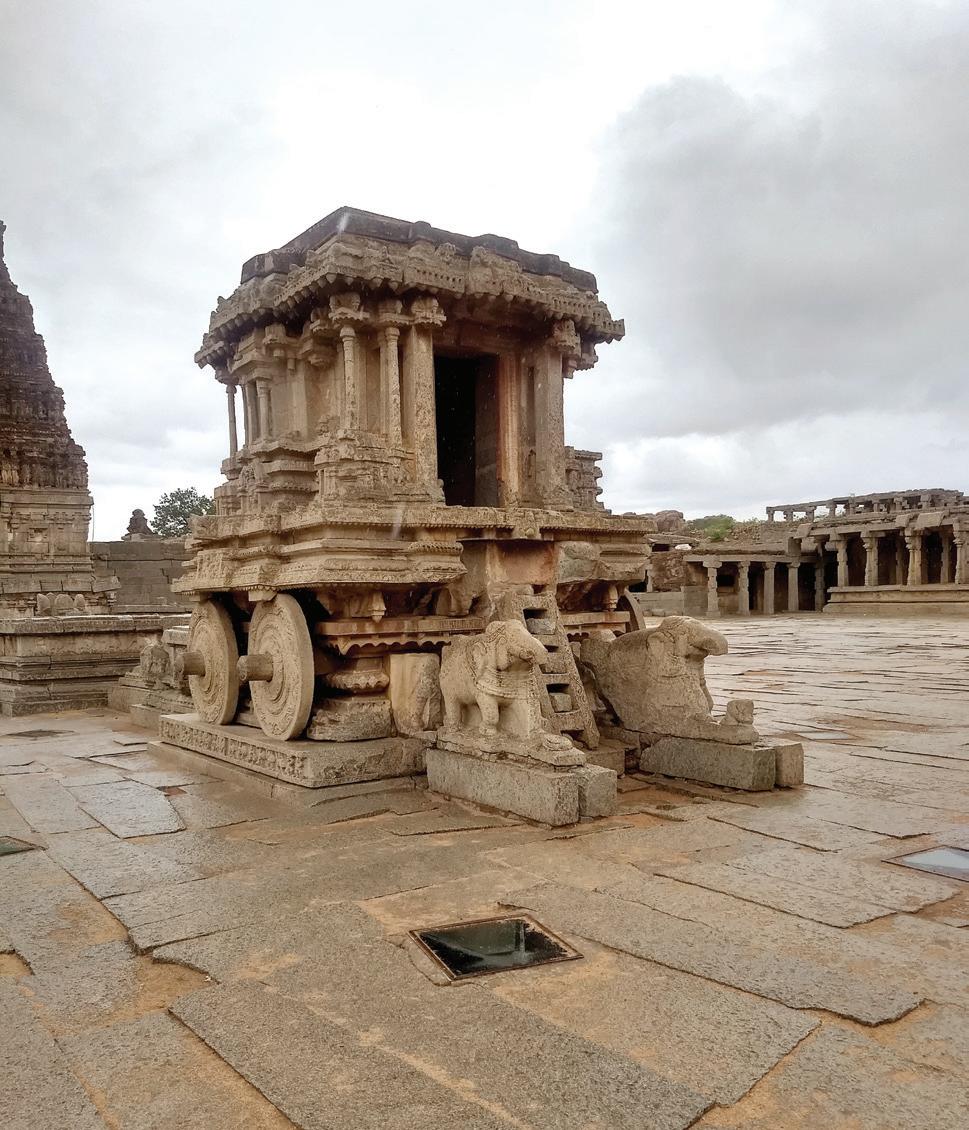
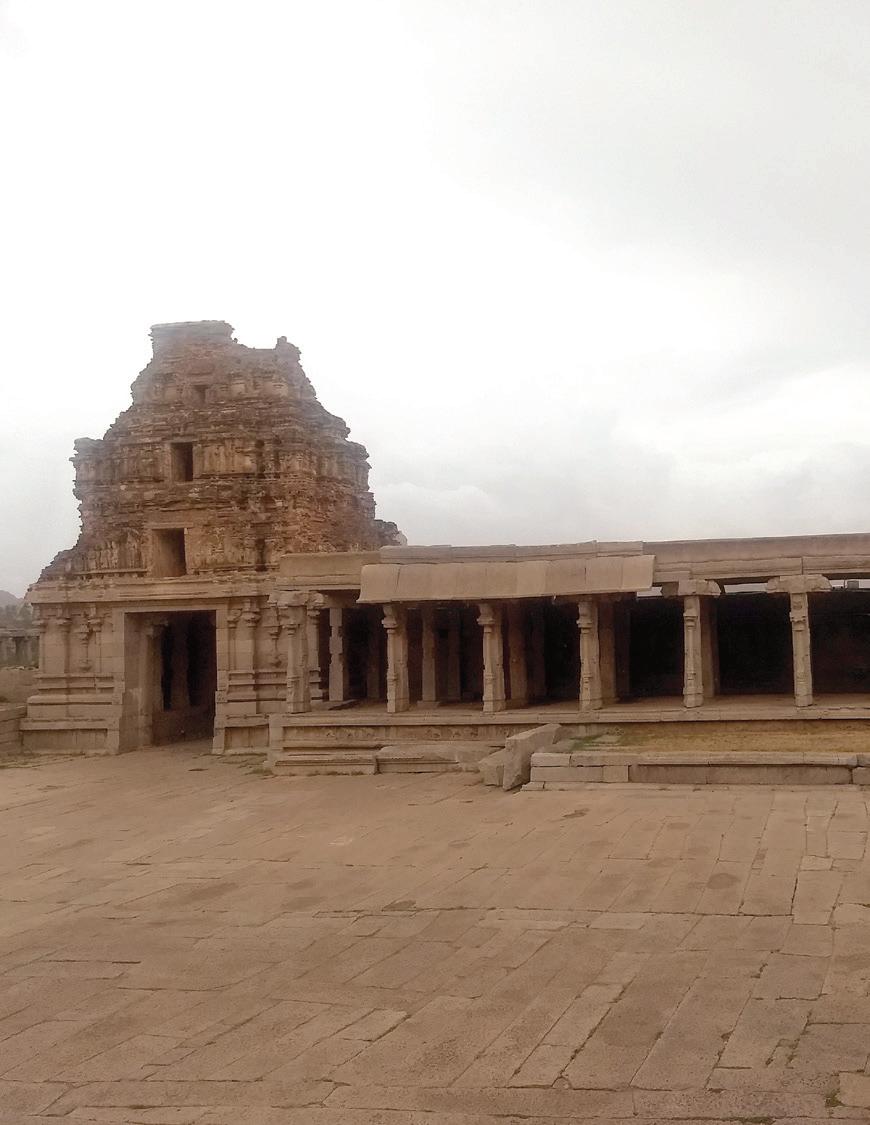
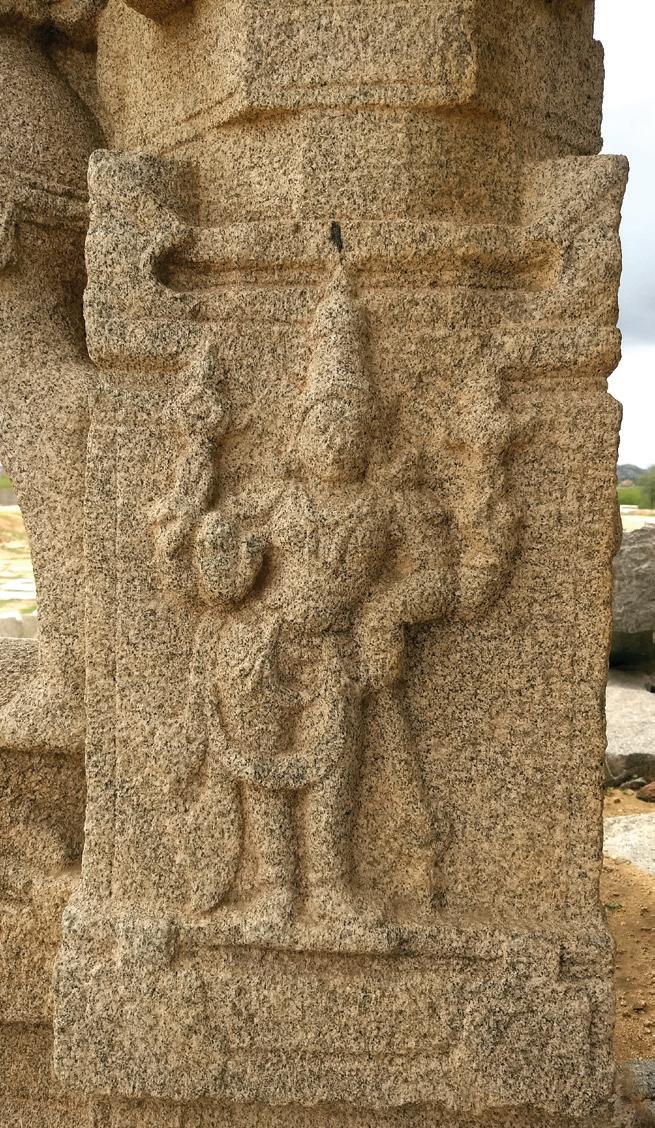
Other places of interest at Hampi are the Queen’s Bath, Mahanavami Dibba, Zenana enclosure, Courtesan’s Street, Sugreeva’s cave and Bhima’s Gateway. If you climb up to Hemakuta Hill, you will discover two large Ganesha statues and a huge 6.7 m Vishnu carved out of a single boulder with a lion’s head and the body of a human lying under a seven-hooded serpent. A trip to Hampi is incomplete if you do not climb the 600 odd steps to the Hanuman Temple at sunset and watch the sun go down over the surreal scenery. It is guaranteed to imbue even an atheist with a spiritual feeling. The best time to visit Hampi is between July to February. Most people do a hasty weekend but visitors should spend time to really get into the skin of this treasure trove.

